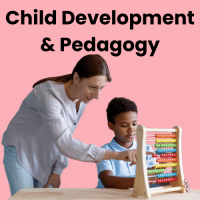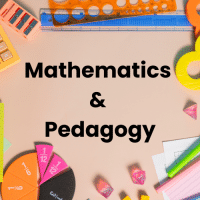CTET & State TET Exam > CTET & State TET Questions > Which of the following is/are an effective st...
Start Learning for Free
Which of the following is/are an effective strategy to address learners from disadvantaged and deprived backgrounds?
- a)Empower vulnerable and marginalized groups to overcome the disadvantages of unequalized socialization.
- b)Teacher should talk to the learners to understand their needs and challenges faced by them.
- c)Education through the language and dialect of underprivileged learners.
- d)All of the above
Correct answer is option 'D'. Can you explain this answer?
| FREE This question is part of | Download PDF Attempt this Test |
Most Upvoted Answer
Which of the following is/are an effective strategy to address learner...
Effective Strategies to Address Learners from Disadvantaged and Deprived Backgrounds
Disadvantaged and deprived learners often face various challenges that hinder their access to quality education. To address these challenges effectively, a combination of strategies should be employed. These strategies include:
Empowering Vulnerable and Marginalized Groups
- Empowering vulnerable and marginalized groups is an effective strategy to address learners from disadvantaged backgrounds. This can be done by providing them with opportunities for equal socialization and addressing the disadvantages they face. By empowering these groups, we can help them overcome the barriers that prevent them from accessing quality education.
Understanding Learners' Needs and Challenges
- Teachers should engage in dialogue with learners to understand their unique needs and challenges. By talking to the learners, teachers can gain insights into their backgrounds, experiences, and specific difficulties they face. This understanding can help teachers develop tailored approaches to support and engage these learners effectively.
Education through the Language and Dialect of Underprivileged Learners
- Language plays a crucial role in learning, and using the language and dialect of underprivileged learners can enhance their educational experience. By incorporating their language and dialect into the curriculum and classroom interactions, educators can create a more inclusive and supportive learning environment. This approach promotes a sense of belonging and helps learners from disadvantaged backgrounds engage more actively in the learning process.
Combining Strategies for Maximum Impact
- Employing all of the above strategies simultaneously can maximize the impact of addressing learners from disadvantaged and deprived backgrounds. Empowering vulnerable groups, understanding learners' needs, and utilizing their language and dialects work collectively to create a more inclusive and equitable learning environment. These strategies complement each other and address various aspects of the learners' challenges, ensuring a holistic approach to their education.
In conclusion, to address learners from disadvantaged and deprived backgrounds effectively, it is essential to employ a combination of strategies. Empowering vulnerable groups, understanding learners' needs, and incorporating their language and dialects into education are all crucial components of an inclusive and equitable approach. By implementing these strategies, educators can create a supportive and empowering learning environment that enables learners from disadvantaged backgrounds to thrive academically and beyond.
Disadvantaged and deprived learners often face various challenges that hinder their access to quality education. To address these challenges effectively, a combination of strategies should be employed. These strategies include:
Empowering Vulnerable and Marginalized Groups
- Empowering vulnerable and marginalized groups is an effective strategy to address learners from disadvantaged backgrounds. This can be done by providing them with opportunities for equal socialization and addressing the disadvantages they face. By empowering these groups, we can help them overcome the barriers that prevent them from accessing quality education.
Understanding Learners' Needs and Challenges
- Teachers should engage in dialogue with learners to understand their unique needs and challenges. By talking to the learners, teachers can gain insights into their backgrounds, experiences, and specific difficulties they face. This understanding can help teachers develop tailored approaches to support and engage these learners effectively.
Education through the Language and Dialect of Underprivileged Learners
- Language plays a crucial role in learning, and using the language and dialect of underprivileged learners can enhance their educational experience. By incorporating their language and dialect into the curriculum and classroom interactions, educators can create a more inclusive and supportive learning environment. This approach promotes a sense of belonging and helps learners from disadvantaged backgrounds engage more actively in the learning process.
Combining Strategies for Maximum Impact
- Employing all of the above strategies simultaneously can maximize the impact of addressing learners from disadvantaged and deprived backgrounds. Empowering vulnerable groups, understanding learners' needs, and utilizing their language and dialects work collectively to create a more inclusive and equitable learning environment. These strategies complement each other and address various aspects of the learners' challenges, ensuring a holistic approach to their education.
In conclusion, to address learners from disadvantaged and deprived backgrounds effectively, it is essential to employ a combination of strategies. Empowering vulnerable groups, understanding learners' needs, and incorporating their language and dialects into education are all crucial components of an inclusive and equitable approach. By implementing these strategies, educators can create a supportive and empowering learning environment that enables learners from disadvantaged backgrounds to thrive academically and beyond.
Free Test
FREE
| Start Free Test |
Community Answer
Which of the following is/are an effective strategy to address learner...
Disadvantaged Learner-
- The socially disadvantaged child is one who is from a socially and economically backward section of the community, who cannot profit from school because of deprivation of one sort or another. Such children show cumulative academic deficits, high dropout rate, and progressive decline in intellectual functioning.
Deprived Learner-
- The term 'underprivileged' refers to the disadvantaged section of people who are economically, socially, and vocationally in an unfavorable situation compared to the rest of the population of society. Thus it is a relative term. They are underprivileged in relation to the middle-class or upper-class people of their society.
Attention CTET & State TET Students!
To make sure you are not studying endlessly, EduRev has designed CTET & State TET study material, with Structured Courses, Videos, & Test Series. Plus get personalized analysis, doubt solving and improvement plans to achieve a great score in CTET & State TET.

|
Explore Courses for CTET & State TET exam
|

|
Similar CTET & State TET Doubts
Which of the following is/are an effective strategy to address learners from disadvantaged and deprived backgrounds?a)Empower vulnerable and marginalized groups to overcome the disadvantages of unequalized socialization.b)Teacher should talk to the learners to understand their needs and challenges faced by them.c)Education through the language and dialect of underprivileged learners.d)All of the aboveCorrect answer is option 'D'. Can you explain this answer?
Question Description
Which of the following is/are an effective strategy to address learners from disadvantaged and deprived backgrounds?a)Empower vulnerable and marginalized groups to overcome the disadvantages of unequalized socialization.b)Teacher should talk to the learners to understand their needs and challenges faced by them.c)Education through the language and dialect of underprivileged learners.d)All of the aboveCorrect answer is option 'D'. Can you explain this answer? for CTET & State TET 2024 is part of CTET & State TET preparation. The Question and answers have been prepared according to the CTET & State TET exam syllabus. Information about Which of the following is/are an effective strategy to address learners from disadvantaged and deprived backgrounds?a)Empower vulnerable and marginalized groups to overcome the disadvantages of unequalized socialization.b)Teacher should talk to the learners to understand their needs and challenges faced by them.c)Education through the language and dialect of underprivileged learners.d)All of the aboveCorrect answer is option 'D'. Can you explain this answer? covers all topics & solutions for CTET & State TET 2024 Exam. Find important definitions, questions, meanings, examples, exercises and tests below for Which of the following is/are an effective strategy to address learners from disadvantaged and deprived backgrounds?a)Empower vulnerable and marginalized groups to overcome the disadvantages of unequalized socialization.b)Teacher should talk to the learners to understand their needs and challenges faced by them.c)Education through the language and dialect of underprivileged learners.d)All of the aboveCorrect answer is option 'D'. Can you explain this answer?.
Which of the following is/are an effective strategy to address learners from disadvantaged and deprived backgrounds?a)Empower vulnerable and marginalized groups to overcome the disadvantages of unequalized socialization.b)Teacher should talk to the learners to understand their needs and challenges faced by them.c)Education through the language and dialect of underprivileged learners.d)All of the aboveCorrect answer is option 'D'. Can you explain this answer? for CTET & State TET 2024 is part of CTET & State TET preparation. The Question and answers have been prepared according to the CTET & State TET exam syllabus. Information about Which of the following is/are an effective strategy to address learners from disadvantaged and deprived backgrounds?a)Empower vulnerable and marginalized groups to overcome the disadvantages of unequalized socialization.b)Teacher should talk to the learners to understand their needs and challenges faced by them.c)Education through the language and dialect of underprivileged learners.d)All of the aboveCorrect answer is option 'D'. Can you explain this answer? covers all topics & solutions for CTET & State TET 2024 Exam. Find important definitions, questions, meanings, examples, exercises and tests below for Which of the following is/are an effective strategy to address learners from disadvantaged and deprived backgrounds?a)Empower vulnerable and marginalized groups to overcome the disadvantages of unequalized socialization.b)Teacher should talk to the learners to understand their needs and challenges faced by them.c)Education through the language and dialect of underprivileged learners.d)All of the aboveCorrect answer is option 'D'. Can you explain this answer?.
Solutions for Which of the following is/are an effective strategy to address learners from disadvantaged and deprived backgrounds?a)Empower vulnerable and marginalized groups to overcome the disadvantages of unequalized socialization.b)Teacher should talk to the learners to understand their needs and challenges faced by them.c)Education through the language and dialect of underprivileged learners.d)All of the aboveCorrect answer is option 'D'. Can you explain this answer? in English & in Hindi are available as part of our courses for CTET & State TET.
Download more important topics, notes, lectures and mock test series for CTET & State TET Exam by signing up for free.
Here you can find the meaning of Which of the following is/are an effective strategy to address learners from disadvantaged and deprived backgrounds?a)Empower vulnerable and marginalized groups to overcome the disadvantages of unequalized socialization.b)Teacher should talk to the learners to understand their needs and challenges faced by them.c)Education through the language and dialect of underprivileged learners.d)All of the aboveCorrect answer is option 'D'. Can you explain this answer? defined & explained in the simplest way possible. Besides giving the explanation of
Which of the following is/are an effective strategy to address learners from disadvantaged and deprived backgrounds?a)Empower vulnerable and marginalized groups to overcome the disadvantages of unequalized socialization.b)Teacher should talk to the learners to understand their needs and challenges faced by them.c)Education through the language and dialect of underprivileged learners.d)All of the aboveCorrect answer is option 'D'. Can you explain this answer?, a detailed solution for Which of the following is/are an effective strategy to address learners from disadvantaged and deprived backgrounds?a)Empower vulnerable and marginalized groups to overcome the disadvantages of unequalized socialization.b)Teacher should talk to the learners to understand their needs and challenges faced by them.c)Education through the language and dialect of underprivileged learners.d)All of the aboveCorrect answer is option 'D'. Can you explain this answer? has been provided alongside types of Which of the following is/are an effective strategy to address learners from disadvantaged and deprived backgrounds?a)Empower vulnerable and marginalized groups to overcome the disadvantages of unequalized socialization.b)Teacher should talk to the learners to understand their needs and challenges faced by them.c)Education through the language and dialect of underprivileged learners.d)All of the aboveCorrect answer is option 'D'. Can you explain this answer? theory, EduRev gives you an
ample number of questions to practice Which of the following is/are an effective strategy to address learners from disadvantaged and deprived backgrounds?a)Empower vulnerable and marginalized groups to overcome the disadvantages of unequalized socialization.b)Teacher should talk to the learners to understand their needs and challenges faced by them.c)Education through the language and dialect of underprivileged learners.d)All of the aboveCorrect answer is option 'D'. Can you explain this answer? tests, examples and also practice CTET & State TET tests.

|
Explore Courses for CTET & State TET exam
|

|
Suggested Free Tests
Signup for Free!
Signup to see your scores go up within 7 days! Learn & Practice with 1000+ FREE Notes, Videos & Tests.
























